Knotless Braids vs. Traditional Box Braids: The Ultimate 2025 Guide | Which is Better for You?
The Great Braid Debate: Knotless Braids vs. Traditional Box Braids
Protective styles are a cornerstone of natural hair care, offering a beautiful way to shield strands from daily manipulation, promote length retention, and express personal style. For decades, traditional box braids have been the reigning champion—an iconic, versatile look beloved across generations. However, a modern contender has emerged and taken the hair world by storm: knotless braids. This evolution in braiding technique has sparked a major debate among enthusiasts and stylists alike: which style is truly better? The decision between knotless braids vs. traditional box braids involves more than just aesthetics; it's a choice that impacts your scalp health, comfort, styling flexibility, and budget.
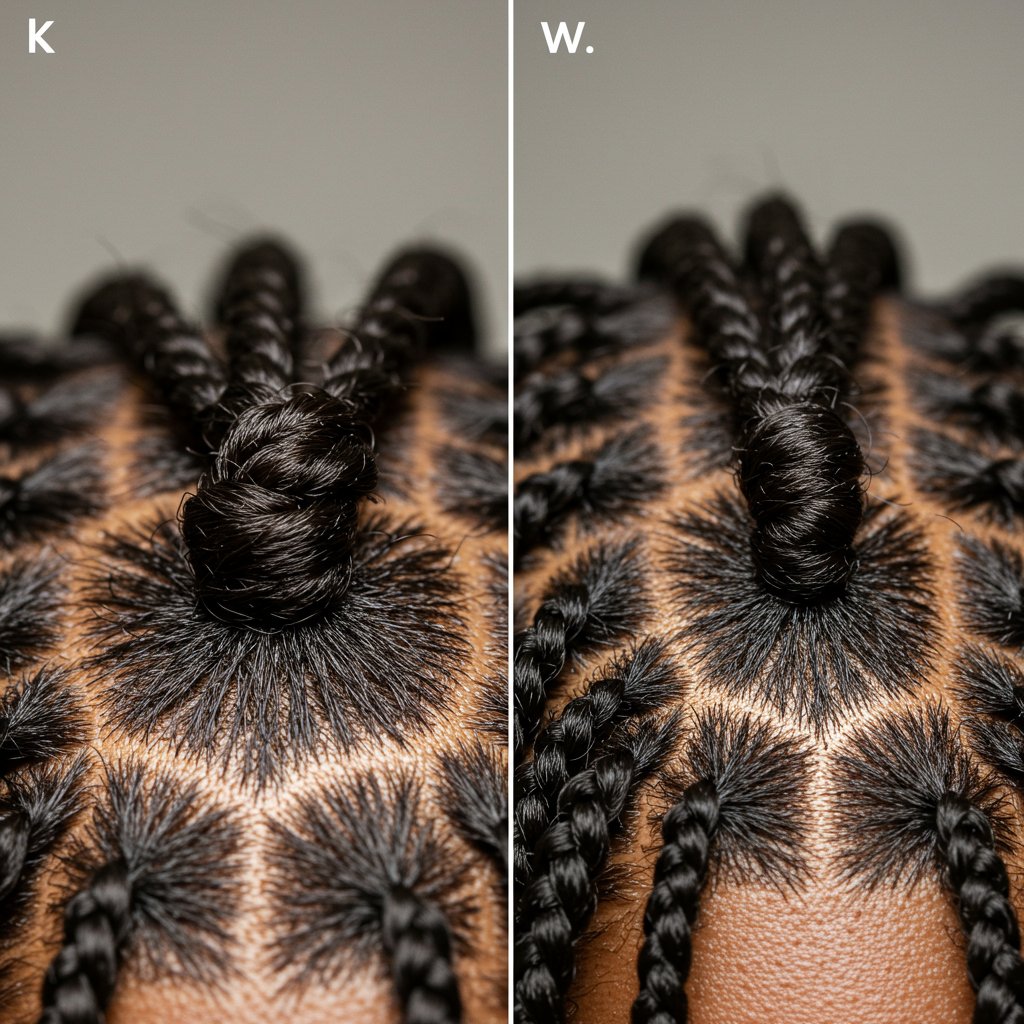
This comprehensive guide will delve deep into the nuances of each style. We will dissect the installation process, compare the comfort levels, analyze the impact on hair and scalp health, explore styling versatility, and break down the differences in longevity and cost. By the end, you'll have all the information you need to confidently decide whether the classic durability of traditional box braids or the modern comfort of knotless braids is the right choice for your hair journey. Making an informed decision is the first step toward a flawless and healthy protective style experience.
Understanding the Classic: What Are Traditional Box Braids?
Traditional box braids are a timeless protective style characterized by their distinct, box-like or square-shaped partings. The defining feature of this method is the small knot created at the base of each braid. The installation begins by wrapping braiding hair around a section of natural hair right at the scalp and creating a secure knot. This anchor point is what gives traditional box braids their renowned durability and uniform appearance. The braid then extends downwards, encasing the natural hair completely within the extension.
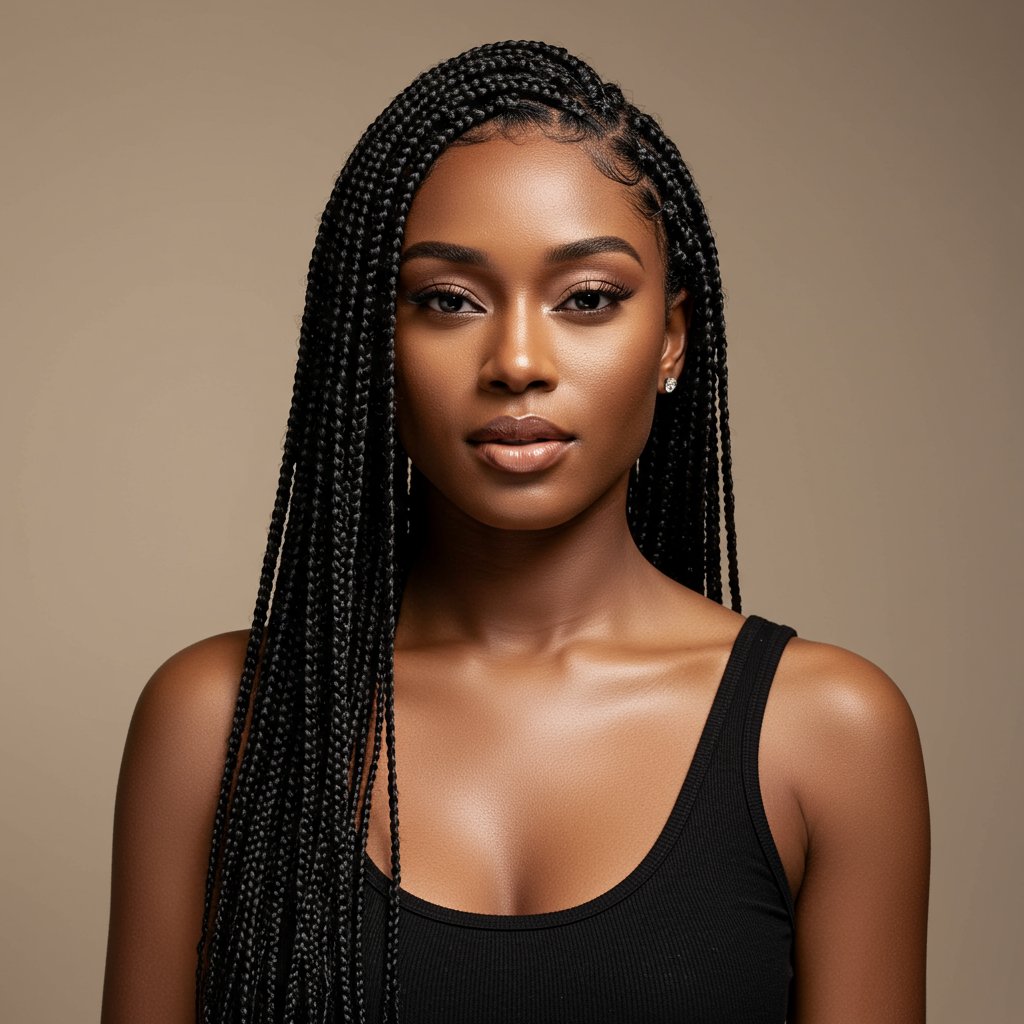
This technique has been a cultural staple for centuries, celebrated for its bold look and impressive longevity. The knot at the root provides a strong foundation that can withstand significant tension and daily styling. This security is why traditional box braids can often be worn for longer periods compared to other styles. The look is iconic—sharp, defined parts and a uniform thickness from root to tip. For many, it's the go-to style for vacations, busy periods, or simply as a long-term protective option that requires minimal daily fuss.
However, the very feature that gives them their strength—the knot—is also the source of their primary drawback. This anchor point can create significant tension on the scalp, especially in the first few days after installation. This can lead to discomfort, headaches, and in some cases, inflammation of the hair follicles, a condition known as folliculitis. If installed too tightly or on sensitive scalps, this tension can risk traction alopecia, particularly around the delicate hairline. Despite this, when installed correctly by an experienced professional who understands proper tension, they remain a beautiful and effective protective style.
The Modern Evolution: What Are Knotless Braids?
Knotless braids represent a revolutionary shift in braiding technique, designed specifically to address the tension and discomfort associated with traditional methods. Unlike their predecessors, knotless braids begin with your natural hair. The stylist starts by braiding a small section of your own hair and then gradually and seamlessly feeds in small pieces of braiding hair as they move down the shaft. This is often referred to as the "feed-in" method.
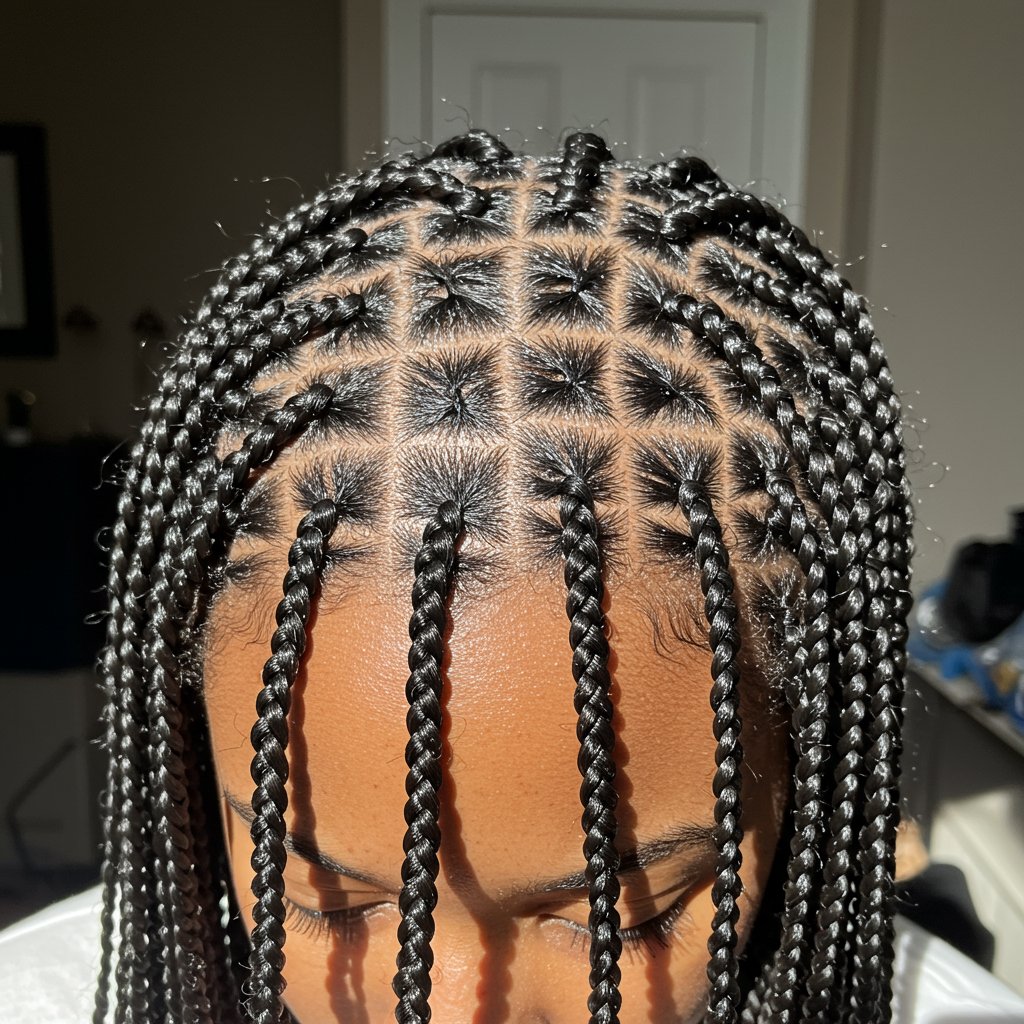
The result is a braid that lies flat against the scalp without the bulky, tight knot at the root. This technique dramatically reduces the tension on the scalp and hair follicles from the very first moment. The appearance is smoother, more natural, and offers a seamless transition from your scalp to the braid. This lack of a base knot is the key differentiator and the primary reason for their meteoric rise in popularity. They offer the protective benefits and beauty of box braids without the initial pain, stiffness, and potential for scalp damage.
This modern approach prioritizes hair health and comfort above all else. Because there's no pulling or tautness at the root, the risk of traction alopecia is significantly lower. The braids are lightweight and flexible from day one, meaning you can tie them up into a ponytail or bun immediately after leaving the salon without wincing. While they might require a more skilled hand and a longer installation time, the benefits of a pain-free experience and healthier scalp are compelling reasons why so many are making the switch from traditional to knotless.
The Installation Process: A Tale of Two Techniques
The fundamental difference in the knotless braids vs. traditional box braids debate lies in the installation process. Understanding these two distinct methods is crucial to appreciating their effects on your hair, scalp, and overall experience.
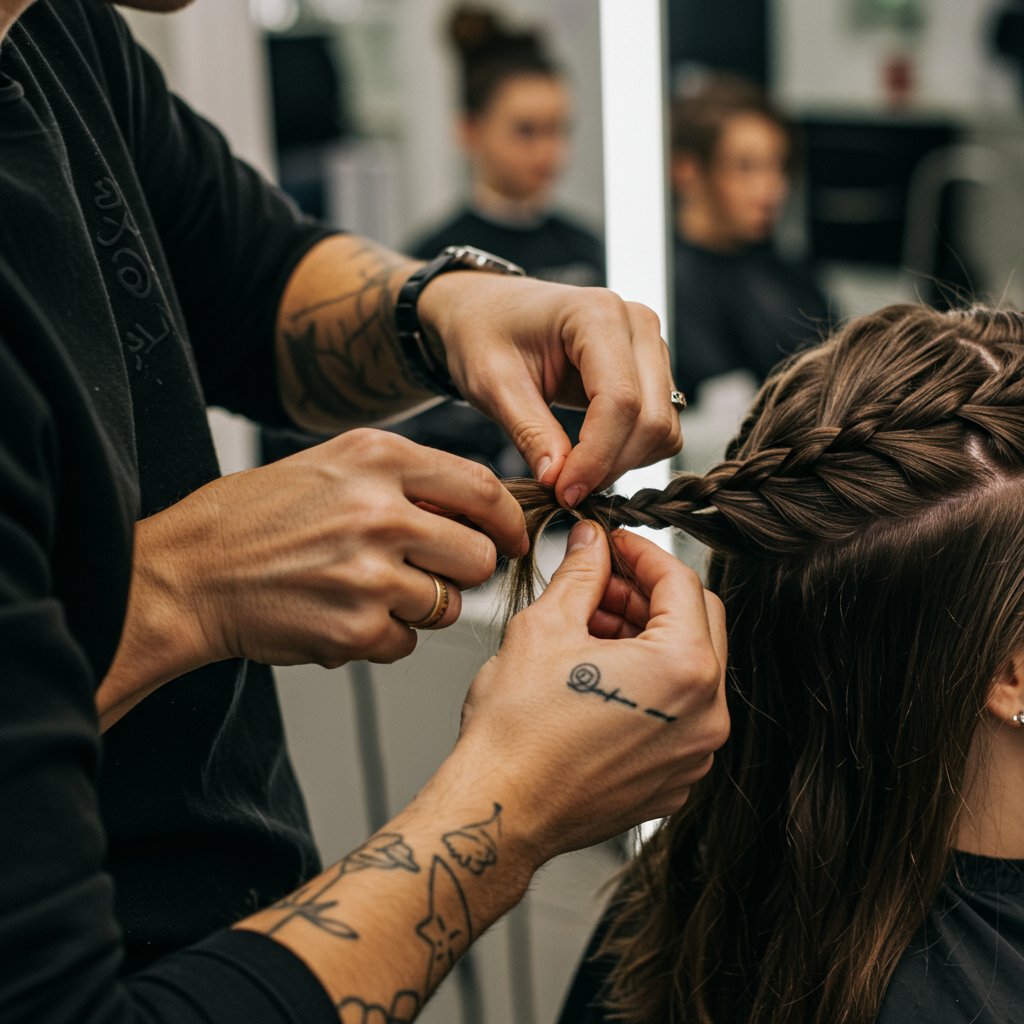
The Traditional Box Braid Method
A stylist installing traditional box braids begins by sectioning the hair into precise, box-shaped parts. For each braid, they take a piece of extension hair, fold it in half, and anchor it around the base of the natural hair section. This is where the knot is formed. By tightly looping and securing the extension hair at the scalp, a firm anchor is created. The stylist then proceeds to braid down, incorporating the natural hair into the three strands. This process is repeated across the entire head. For a skilled braider, this method can be relatively quick, as the anchor-and-braid technique is straightforward and repetitive.The Knotless Braid Method
The knotless installation requires more finesse and a different kind of skill. The stylist also begins with precise parting. However, instead of creating a knot, they start braiding with just the client's natural hair for the first few stitches. Then, they begin the feed-in process: small, incremental pieces of braiding hair are added into the braid as the stylist works their way down. This creates a gradual taper and a smooth, flat transition at the root. This meticulous technique avoids the tension-filled pull of the traditional knot, but it is inherently more time-consuming and demands a higher level of precision from the stylist. This longer, more detailed process is a primary factor in the higher cost of knotless braids.Pain and Tension: The Decisive Comfort Factor
For many, the deciding factor in the knotless vs. traditional box braids argument is comfort. The experience during and immediately after installation can be worlds apart.

Traditional box braids are notorious for the initial period of tightness. The anchoring knot pulls directly on the scalp, and it's common for clients to experience soreness, tenderness, and even headaches for several days. This tension can make sleeping uncomfortable and limit styling options, as pulling the braids into an updo can exacerbate the pain. In sensitive individuals, this can also lead to "braid bumps" or pustules, which are signs of irritated hair follicles struggling against the pull.
Knotless braids, on the other hand, are celebrated for being virtually painless. Because the braid starts with your own hair and the extensions are fed in gradually, there is no sudden, harsh pull on the follicle. The braids lay flat and move freely from the moment the style is complete. This immediate flexibility means you can wear your hair in a high ponytail, a bun, or any other style right out of the salon chair without discomfort. This pain-free, lightweight feel is a game-changer for those with tender scalps or low pain tolerance, making the protective style experience enjoyable from start to finish.
Hair Health & Scalp Care: Which Style is Gentler?
When choosing a long-term protective style, the health of your natural hair and scalp should be a top priority. Here, knotless braids often take the lead.
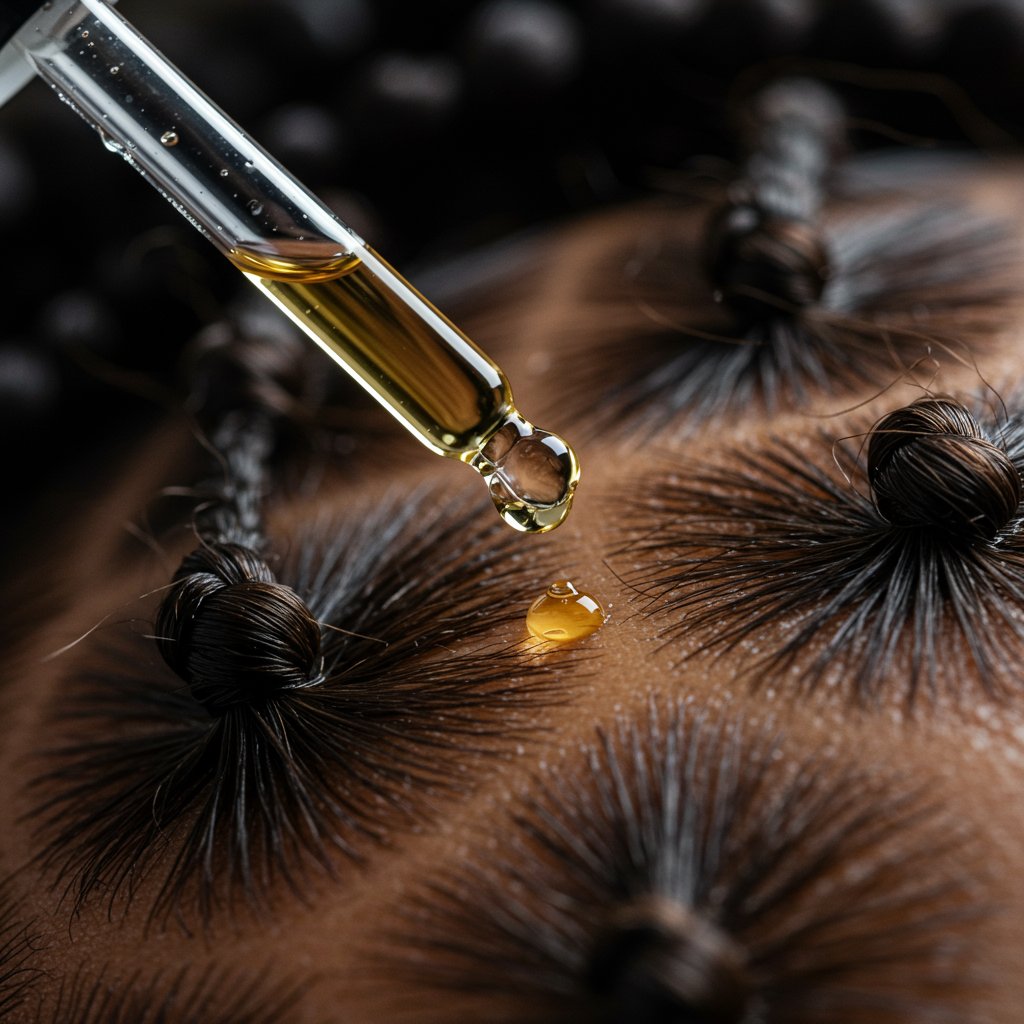
The Risk of Traction Alopecia
The constant, high tension from the knots in traditional box braids poses a significant risk for traction alopecia—hair loss caused by prolonged or repetitive pulling on the hair follicle. The edges and nape are particularly vulnerable. While a skilled stylist can minimize this risk, the technique itself is inherently more tension-heavy. The knot at the base can also make it slightly more challenging to effectively cleanse and moisturize the scalp, sometimes leading to product buildup.The Knotless Advantage
Knotless braids are widely considered the healthier option. By eliminating the tension-heavy knot, they place minimal stress on the hair follicles. This makes them a much safer choice, especially for individuals with fine hair, thinning edges, or a sensitive scalp. The flat lay of the braids also allows for better access to the scalp. This makes it easier to apply oils, serums, and cleansers directly to the skin, promoting a healthier scalp environment and encouraging hair growth. For those focused on hair preservation and health, the knotless method provides superior protection and care.Versatility and Styling: Flexibility From Day One
Both styles are incredibly versatile, allowing for a vast array of looks, from simple ponytails to intricate updos. However, knotless braids offer an edge in terms of immediate styling flexibility.
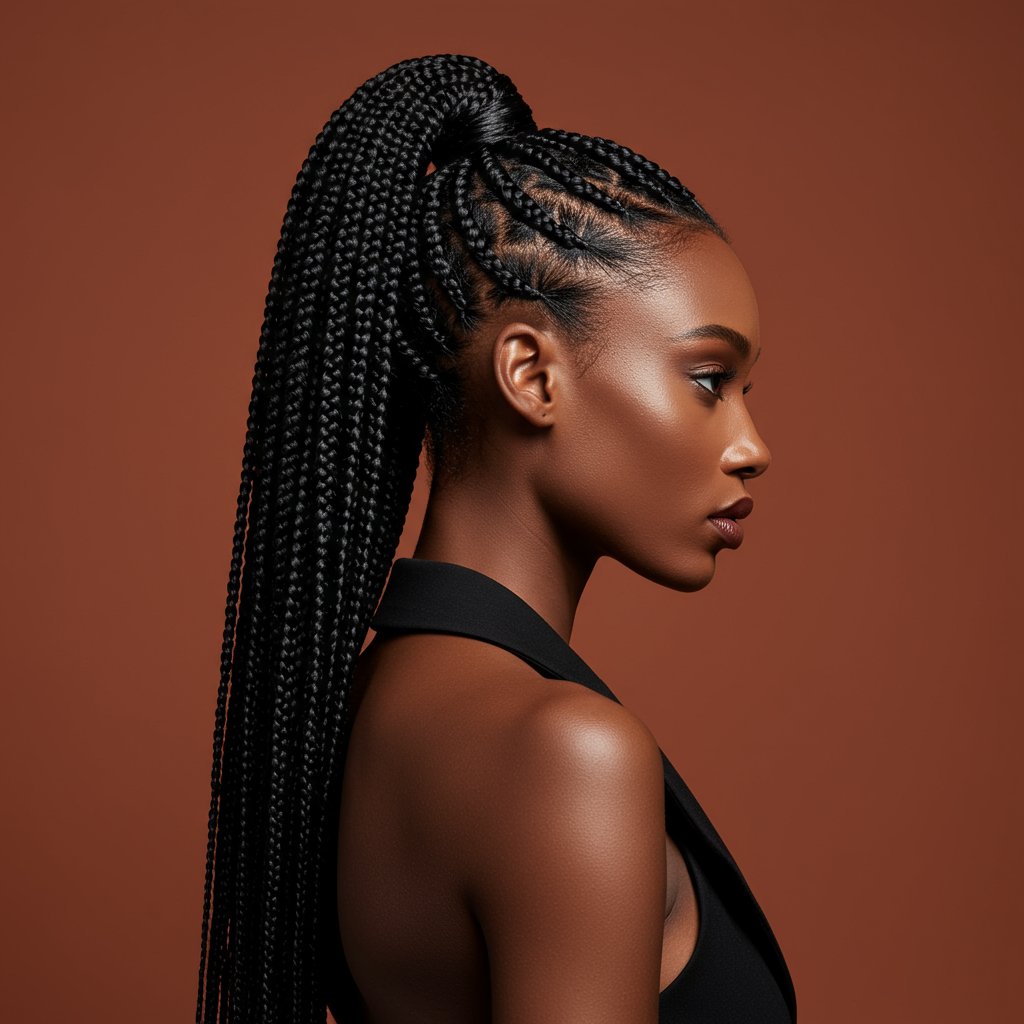
With traditional box braids, the initial stiffness from the knots can make styling difficult for the first week or so. Pulling them into a high ponytail or bun can be painful and may increase tension on the scalp. They typically need some time to "loosen up" before they can be manipulated comfortably. The knots are also more visible, which can affect the overall look of certain styles.
Knotless braids, in contrast, are supple and moveable from the moment they're installed. The lack of a knot allows them to move and flow like individual strands of hair. You can sweep them into a high bun, a half-up style, or a sleek ponytail immediately without any pain or strain. The seamless root also provides a more natural and less bulky appearance, making updos look sleeker and more polished. This day-one versatility is a major advantage for those who lead active lifestyles or love to switch up their look frequently.
Longevity and Cost: Breaking Down the Investment
Your budget and how long you want the style to last are practical considerations that can sway your decision. In this category, the two styles present a clear trade-off.
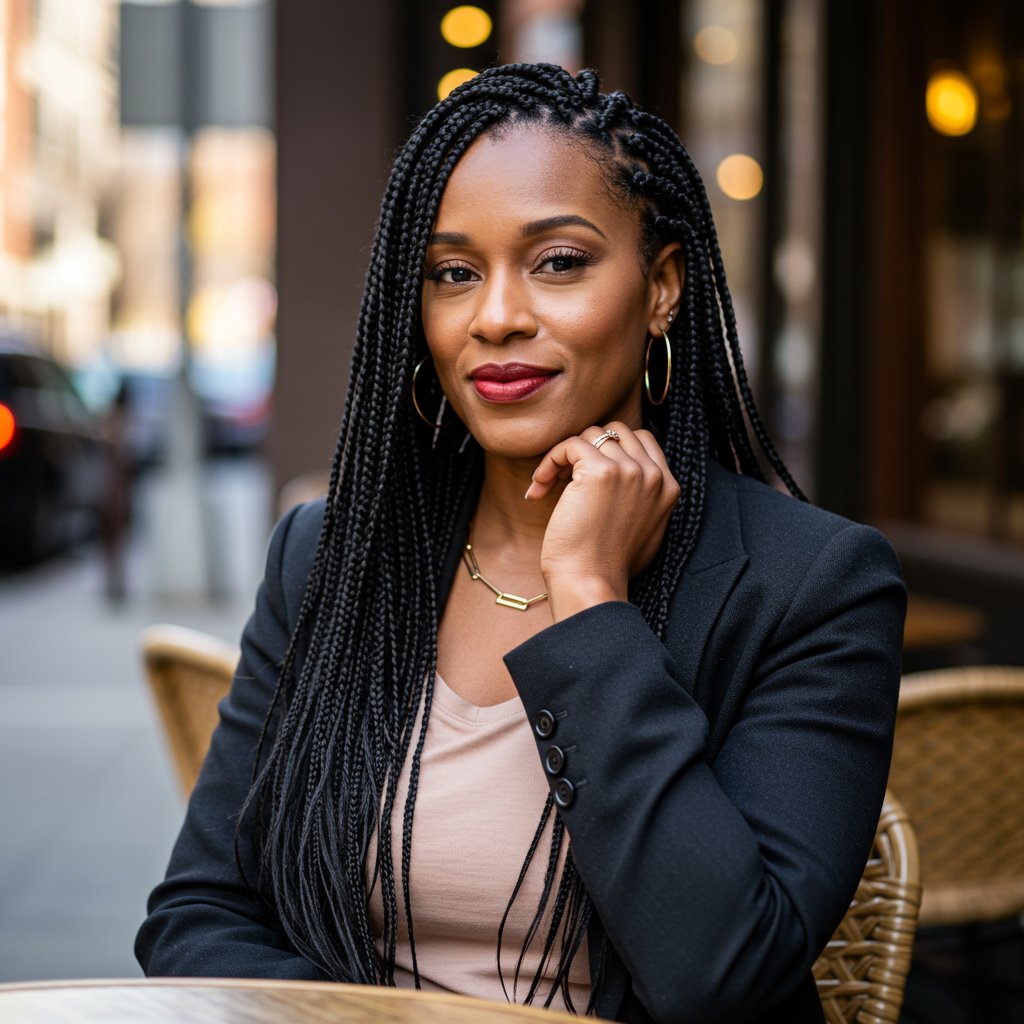
Longevity
Generally, traditional box braids may last slightly longer. The secure knot at the base provides a robust anchor that can keep the braid looking neater for an extended period, typically 6 to 8 weeks with proper care. Knotless braids, because they start with natural hair, may be more prone to frizz at the root as your new growth comes in. They usually look their best for 4 to 6 weeks. However, longevity for both styles is highly dependent on your hair growth rate, texture, and maintenance routine.Cost
There is a distinct price difference between the two. Knotless braids are consistently more expensive than traditional box braids. This price increase is justified by two factors: time and skill. The feed-in method is more intricate and labor-intensive, meaning the installation appointment is longer. It also requires a higher level of technical skill from the stylist. You are paying for a premium service that prioritizes the health and comfort of your scalp. While traditional box braids are more budget-friendly upfront, many consider the extra cost of knotless braids a worthwhile investment in their hair's long-term health.Tips for Choosing the Right Style for You
Deciding between knotless braids and traditional box braids is a personal choice. Consider these factors to make the best decision for your needs:

- Scalp Sensitivity: If you have a tender scalp or are prone to tension headaches, knotless braids are the unequivocal winner. The pain-free installation and lightweight feel will provide a much more comfortable experience.
- Hair Type and Density: Those with fine or low-density hair should lean towards knotless braids to minimize stress on their follicles. For those with thick, dense hair, traditional box braids can be a viable option, provided they are not installed too tightly.
- Budget: If cost is your primary concern, traditional box braids are the more economical choice. However, weigh this against the potential long-term cost of hair damage if not installed carefully.
- Lifestyle: If you're highly active and need to tie your hair up immediately for work, sports, or convenience, the immediate flexibility of knotless braids will be a significant benefit.
- Desired Look: Consider aesthetics. Do you prefer the bold, defined look of traditional knots, or the seamless, natural appearance of knotless roots? Both are beautiful, so this comes down to personal preference.
Frequently Asked Questions (FAQ)
1. Do knotless braids actually prevent hair damage?
Knotless braids significantly reduce the risk of traction-related damage compared to traditional braids. By eliminating the tight knot at the root, they place far less stress on the hair follicle. However, any style can cause damage if not maintained properly or left in for too long. Proper moisture and gentle handling are still key.2. How long do knotless braids last compared to traditional ones?
Traditional box braids can last 6-8 weeks due to their secure knot. Knotless braids typically last 4-6 weeks before the new growth and potential frizz at the root become more noticeable. Longevity depends heavily on individual hair growth and maintenance.3. Can I get knotless braids with fine or thinning hair?
Yes, knotless braids are an excellent and often recommended option for those with fine or thinning hair. The gentle, tension-free application is much safer for delicate hair follicles and can help protect fragile strands from further damage.4. Why are knotless braids so much more expensive?
The higher price point reflects the increased time and skill required for installation. The meticulous feed-in technique is more labor-intensive than the traditional knotting method, so you are paying for the stylist's expertise and the longer service time.5. How should I prepare my hair before getting braids?
Regardless of the style you choose, your hair should be freshly washed, deep-conditioned, and thoroughly detangled and stretched (e.g., via a blow-dry on low heat or threading). This creates a clean, smooth canvas for the stylist and helps ensure the best possible results.6. Which style is better for an active lifestyle?
Knotless braids are generally better for an active lifestyle due to their immediate flexibility and lightweight feel. You can pull them into a secure ponytail or bun for workouts right away without causing pain or tension on your scalp.The Final Verdict: Which Braid Reigns Supreme?
In the compelling showdown of knotless braids vs. traditional box braids, there is no single champion. The "better" style is entirely subjective and depends on your individual priorities. It's a classic case of tradition versus innovation, and both have their rightful place in the world of protective styling.
Traditional box braids offer a timeless aesthetic, unmatched durability, and a more budget-friendly price point. They are a fantastic option for those with resilient scalps who want a long-lasting style with a classic, defined look. On the other hand, knotless braids prioritize comfort, scalp health, and modern, natural-looking aesthetics. They are the ideal choice for anyone with a sensitive scalp, finer hair, or those who value a pain-free experience and immediate styling versatility above all else. They represent an investment in the long-term health of your hair.
Ultimately, the best way to decide is to assess your hair's needs, your lifestyle, and your budget. Consulting with a trusted, experienced braiding professional is invaluable. They can assess your hair and scalp and provide a personalized recommendation to help you achieve a beautiful, healthy, and long-lasting protective style that you will love.


